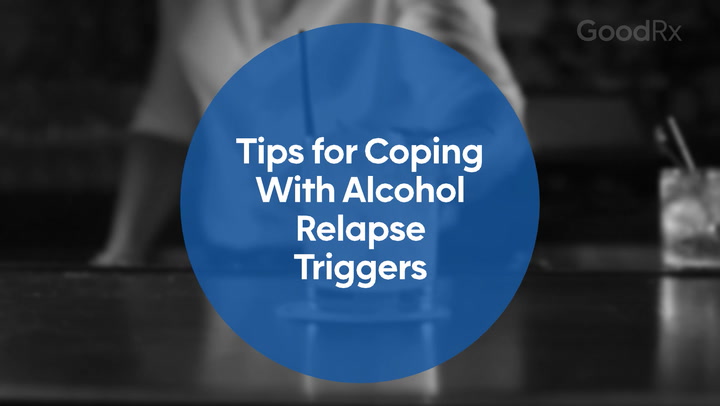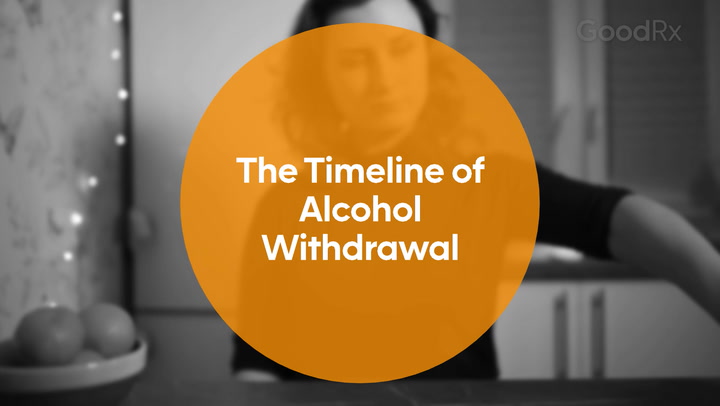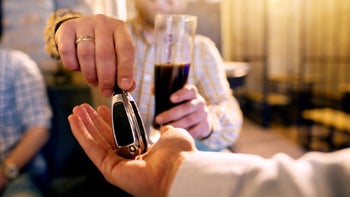
Is It Safe to Detox From Alcohol at Home?
Key takeaways:
Alcohol detoxification (detox) can be done at home or in a facility. Both options can be safe with the supervision of a healthcare professional.
Withdrawing from alcohol can be dangerous because you can develop seizures or a serious condition called delirium tremens. Medications can lower the risk of developing these.
For your safety, it’s extremely important to work with a healthcare professional throughout the detox period. They provide you with the medications, support, and resources to increase your chances of detoxing safely and successfully.
Table of contents

If you or someone you know is thinking about alcohol detox at home, there are a few things that are important to know first. In comparison to other substances, alcohol withdrawal can be particularly dangerous. This is because withdrawal symptoms can lead to things like confusion, hallucinations, and seizures. In severe cases, it can even be life-threatening.
But that doesn’t mean at-home detox is unsafe for everyone. There are steps you can take to detox at home that make it safer, and more comfortable.
Medical detox vs. alcohol detox at home
In the past, all alcohol detox programs were in hospitals. This is because the body goes through unique changes that can be sometimes dangerous when you first detox from alcohol. These include withdrawal symptoms like extreme changes in heart rate and blood pressure, and alcohol withdrawal seizures.
Search and compare options
When you detox in a hospital, a healthcare professional monitors you closely and gives you medications as needed. The goal is to help prevent your alcohol withdrawal symptoms from getting more serious. And if you do develop any complications, like a seizure, someone is there to respond right away.
Now, many programs offer outpatient detox treatment that you can do from home. At-home detox means you can live at home while going through treatment. Although you won’t be staying in a hospital, you will have regular visits with a healthcare professional. They will teach you how to monitor your symptoms, and how to safely give yourself medication at home when you need it.
Inpatient detox is the safest option, especially if you have severe alcohol use disorder. But for some people, a supervised detox at home can be a safe alternative.
Is it safe to detox from alcohol at home?
Yes, it can be safe to go through alcohol detox at home. Many people have been satisfied with the process. And they’ve detoxed successfully and safely.
The goal of detoxing at home is the same as in a hospital: to help prevent the development of more serious alcohol withdrawal. We will touch on what these might look like below.
A good candidate for an at-home detox program is someone who:
Has stable housing and a good support system
Has the ability to get to the pharmacy and medical appointments
Hasn’t recently drank large amounts of alcohol
Doesn’t have any serious medical or other psychiatric or mental health conditions
Doesn’t have thoughts of self-harm or suicide
Isn’t using any other substances, including benzodiazepines
Doesn’t have a history of withdrawal seizures or delirium tremens (DTs)
Hasn’t experienced severe alcohol withdrawal in the past
Alcohol withdrawal symptoms: Stopping alcohol can lead to a range of symptoms, from mild to life-threatening. Learn what to expect and how to stay safe.
Quitting alcohol: Here are different approaches that can help you cut back on alcohol or stop drinking altogether.
Alcohol and your health: Drinking alcohol can take a toll on your mind and body. Here are the health benefits of quitting.
Whether you choose inpatient or at-home detox, the safest way to detox from alcohol is under the care and coordination of a healthcare professional.
Alcohol withdrawal symptoms: What to expect
If you drink regularly, your body has gotten used to the numbing effects of alcohol. So when you detox and remove alcohol from your system, it can cause your body to go into withdrawal. Everyone’s symptoms will be a little different based on their drinking and health history.
The following provides a picture of the typical alcohol detox timeline. But it’s important to note that this is what alcohol withdrawal looks like without the help of medication, so it includes more severe symptoms. When you work with a healthcare professional, you’ll receive medication to prevent some of the more severe symptoms. This is for your safety and comfort.
Initial withdrawal (within the first few hours)
Withdrawal symptoms can start as soon as 2 hours after your last drink of alcohol. These include symptoms like:
Anxiety
Mood changes or irritability
Difficulty sleeping as well as feeling tired
Tremors
Headaches
Palpitations (a feeling like your heart is beating really fast)
Nausea and an upset stomach
Sweating
Typically these symptoms are uncomfortable but can be managed at home. And even though they’re the first to show up, they can also linger for a few weeks.
Seizures and hallucinations (12 hours)
Seizures and hallucinations typically start within the first 12 to 24 hours of detox. But they can also start a little later, around 48 hours. These are both signs of more severe withdrawal.
With hallucinations, people will hear, see, or even feel things that are not really there. Alcohol withdrawal seizures are usually big seizures, called tonic-clonic seizures. With these types of seizures, someone will lose consciousness and their whole body will convulse. In rare cases, they can be deadly.
If you’ve ever had hallucinations or seizures from alcohol withdrawal, it will be safer for you to detox in a facility. But if you and a healthcare professional agree it’s safe for you to try alcohol detox at home, they will likely prescribe you medications to prevent a seizure. Even then, it’s best to have someone there with you. That way, if you do have a seizure at home, they can call 911 and get you to a hospital as soon as possible.
Delirium tremens (48 hours)
Delirium tremens (DTs) is a medical term that describes a group of severe symptoms. It’s the most dangerous part of the alcohol detox. DTs usually start about 48 hours after your last drink.
Symptoms include:
Confusion and agitation
Shakiness
Delirium, a change in your mental state that can cause severe disorientation
Hallucinations
High blood pressure
A fast heart rate
Elevated temperature
Sweating
It’s important to avoid this stage of alcohol detox in order to stay safe. This is why a healthcare professional will monitor your symptoms and prescribe medication to prevent this from happening.
How long does it take to detox from alcohol?
Alcohol withdrawal symptoms tend to peak around 5 days after your last drink. And even though the most severe symptoms tend to happen in the first few days, withdrawal symptoms can last up to a few weeks. A healthcare professional will work closely with you to taper (slowly decrease) your medications. This will help treat ongoing symptoms and allow you to transition back into your daily life.
How to safely detox from alcohol at home
The above symptoms can sound scary. But remember that it’s possible to safely detox from alcohol at home. To be successful, it’s important to take the following steps.
1. Connect with a healthcare professional
If you are ready for alcohol detox, you might be thinking you want to start right away. This is understandable. But it’s important to first find a healthcare professional and work with them to develop a plan.
A healthcare professional’s assessment will include:
A blood test to check your liver function and nutrient levels
A discussion about your drinking patterns so they can understand your risks for the more serious alcohol withdrawal symptoms
Prescription medications, including instructions on how much medication to take and how often
A discussion on when you should get immediate medical attention
Some healthcare professionals may also ask you to sign a treatment contract. This can help keep you both on the same page about your detox program. The goal of the treatment contract is to help keep you safe and allow you to detox successfully.
2. Understand your current drinking patterns
Some medical professionals may ask or encourage you to keep a daily diary of alcohol intake or cravings. Some things to record include:
Date and time that you desire a drink
What triggered the desire to drink
What thoughts and feelings you had in that moment
How much, if any, alcohol you drank
Keeping this type of diary helps you be aware of your thoughts and emotions related to drinking. It also helps you identify common situations that make you want to drink. When you understand these patterns, it helps you avoid potential triggers that can make it harder to detox at home. Also, simply recording the information can help you feel more in control of your cravings.
3. Know when to get medical attention for alcohol withdrawal symptoms
When detoxing at home, it’s important to know when to get additional help. The American Society of Addiction Medicine recommends getting help in a hospital setting if:
Symptoms like agitation or tremor don’t get better with detox medication.
Any of your symptoms worsen, like repeated vomiting or hallucinations.
You have a seizure or lose consciousness.
You are sleepy to the point where someone has trouble waking you up.
You start drinking alcohol again.
Your blood pressure and/or heart rate is very low or very high (a healthcare professional will likely have you monitor this during your detox).
4. Tips to staying sober through detox
Detoxing from alcohol, and the journey of staying sober, can feel overwhelming at times. There are a few things you can do to help increase your chances of staying sober throughout the detox.
First off, remove alcohol from your home. Minimizing your access to alcohol decreases the temptation to drink.
Here are some other tips to consider:
Ask for help. Talk with your family and friends about your goals and ask for support. You can also ask someone to stay with you to keep you safe and help you successfully detox.
Stay hydrated with nonalcoholic drinks. Anything from water to juice can be good alternatives to stay hydrated.
Clear your schedule. It will be hard to guess how you’re going to feel during this time. You can reduce your commitments and take time off work.
Try to eat something. Even though you may not feel like eating, try to take in at least some calories and nutritious foods every day. Since long-term alcohol use can lead to malnourishment, it’s important to give your body the energy and nutrients it needs.
Take your prescribed medications. This may include prescription medications to help with your withdrawal symptoms, as well as vitamins like vitamin B1 (also known as thiamine).
Join a support group. It can help to talk with people who have been through this before and know how to support you. And it really increases your chances of success.
Track your progress during your detox. You can write things down like when and how often you’re craving alcohol, and what your reasons are for quitting alcohol. And be sure to celebrate the daily wins, no matter how small. This can be an easy but powerful way to keep you motivated on your detox journey.
5. Continue on the road to recovery
Even though detox can feel like the hardest part, remember that it’s just the first step in recovery. After that, connect with a treatment program that provides therapy and education. Support groups like Alcoholics Anonymous (AA) are also available. These options help keep you on the road to recovery and reduce your chances of a relapse. You can also consider working with a therapist who can support you through your journey.
Frequently asked questions
Yes, some alcohol withdrawal symptoms — like seizures and delirium tremens — can be deadly when left untreated. This is why it’s important to detox with the guidance of a healthcare professional. Life-threatening symptoms from alcohol withdrawal are more likely to occur if you’ve been drinking heavily over a long period of time.
There’s no research to suggest that THC (tetrahydrocannabinol) is helpful with alcohol withdrawal. Some research suggests that, in some situations, cannabis may help lessen nausea and vomiting — common symptoms of alcohol withdrawal. But THC use over time can also lead to cannabinoid hyperemesis syndrome (CHS), which causes severe nausea and repeated vomiting.
Some researchers are studying how CBD (cannabidiol), another compound in cannabis, may affect alcohol withdrawal. But more research is needed.
Although there are plenty of myths about flushing alcohol out of your body, there’s no way to sober up quickly from alcohol. Your body needs time to process alcohol. Gastric lavage (stomach pumping) is also not recommended to treat alcohol poisoning. An alcohol overdose is a serious condition that needs emergency medical attention. Call 911 if you think someone may be having an overdose.
The bottom line
Deciding to quit alcohol is a big step in recovery. And it can feel scary and daunting. But detoxing cold turkey can be dangerous. A detox treatment program can both increase your chances of successfully detoxing and keep you safe during the detox period.
Detoxing at home is a great option for some people. A healthcare professional will be involved to support you so you never feel alone. They’ll help you understand when to get immediate help. The first step is to talk with a healthcare professional to figure out if you should go through alcohol detox at home or in a facility.
Why trust our experts?



References
Allan, C., et al. (2000). Detoxification from alcohol: A comparison of home detoxification and hospital-based day patient care. Alcohol and Alcoholism.
American Psychological Association. (2018). Delirium. American Psychological Association Dictionary of Psychology.
American Society of Addiction Medicine. (2020). The ASM clinical practical guideline on alcohol withdrawal management.
Carlebach, S., et al. (2011). Experiences of home detoxification for alcohol dependency. Nursing Standard.
Davis, C. (2018). Home detox: Supporting patients to overcome alcohol addiction. Australian Prescriber.
Espinoza, G. (2023). Dangers of detoxing from alcohol at home. American Addiction Centers.
Gallagher, N., et al. (2019). The diagnosis and management of toxic alcohol poisoning in the emergency department: A review article. Advanced Journal of Emergency Medicine.
Gasparyan, A., et al. (2023). Cannabidiol regulates behavioral and brain alterations induced by spontaneous alcohol withdrawal. Neuropharmacology.
Jesse, S., et al. (2017). Alcohol withdrawal syndrome: mechanisms, manifestations, and management. Acta neurologica Scandinavica.
Trevisan, L. A., et al. (1998). Complications of alcohol withdrawal. Alcohol Health and Research World.
If you or someone you know struggles with substance use, help is available. Call SAMHSA’s National Helpline at 1-800-662-4357 to learn about resources in your area.

























